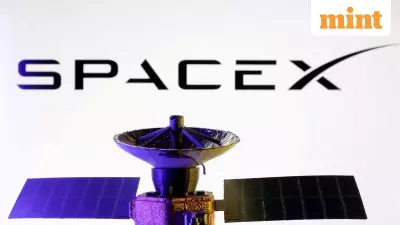
The artificial intelligence frenzy has reached a critical juncture as investors begin questioning the astronomical sums being poured into this transformative technology. What started as enthusiastic backing of AI's potential is now evolving into cautious scrutiny of returns on these massive investments.
The Spending Spree That's Worrying Wall Street
Tech behemoths are engaged in what can only be described as an AI arms race, with spending reaching unprecedented levels. Microsoft, Google, Amazon, and Meta are collectively investing hundreds of billions in AI infrastructure, research, and development. This includes everything from building massive data centers to developing increasingly sophisticated AI models.
NVIDIA, the chipmaker powering much of this revolution, has seen its valuation soar past $3 trillion, becoming one of the world's most valuable companies. However, this meteoric rise has left many investors wondering: when will these enormous investments translate into substantial revenue growth?
The Profitability Paradox
Despite the hype surrounding AI, concrete evidence of significant revenue generation remains elusive for many companies. The technology requires massive upfront investment in computing power, specialized chips, and skilled personnel before potentially delivering returns down the line.
Several concerning patterns are emerging:
- Companies are spending billions on AI infrastructure with uncertain timelines for profitability
- Competition is driving costs higher as tech giants battle for AI supremacy
- Many AI applications remain in experimental phases rather than revenue-generating products
- Investor patience is being tested as quarterly results show more spending than returns
Wall Street's Growing Skepticism
Financial analysts are beginning to voice concerns about whether the AI spending frenzy is sustainable. The fundamental question being asked: How much AI investment is too much before investors start seeing diminishing returns?
This skepticism isn't about doubting AI's long-term potential, but rather about the pace and scale of current investments. Some worry that companies might be overestimating how quickly AI will transform their businesses and generate substantial profits.
The Cloud Computing Conundrum
Cloud computing divisions, particularly at Microsoft Azure, Google Cloud, and Amazon Web Services, have become the primary battleground for AI services. While these units are showing growth from AI-related services, the margins are being squeezed by the enormous costs of running AI workloads.
The challenge for these cloud providers is balancing the need to invest heavily in AI infrastructure while maintaining profitability—a delicate act that's becoming increasingly difficult as competition intensifies.
What's Next for AI Investments?
As we move into the second half of 2024, the AI investment landscape appears to be at a crossroads. Companies face pressure from investors to demonstrate that their massive AI bets will pay off in the foreseeable future.
The coming quarters will be crucial in determining whether current AI spending levels are justified or if we're witnessing the early stages of an AI investment bubble. One thing is certain: the era of blank-check approval for AI projects is ending, and the demand for tangible results is growing louder on Wall Street.





